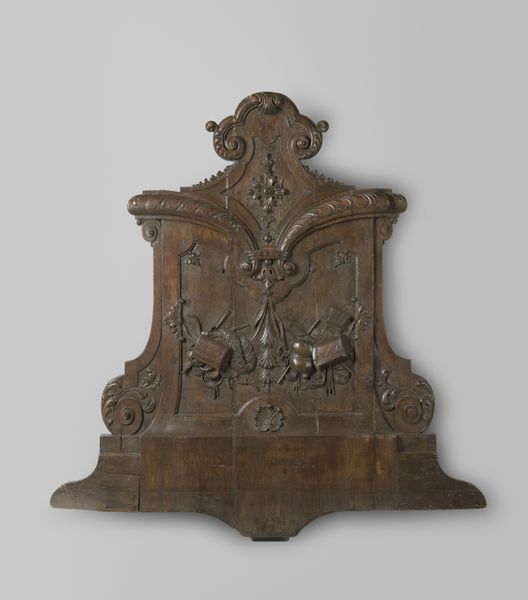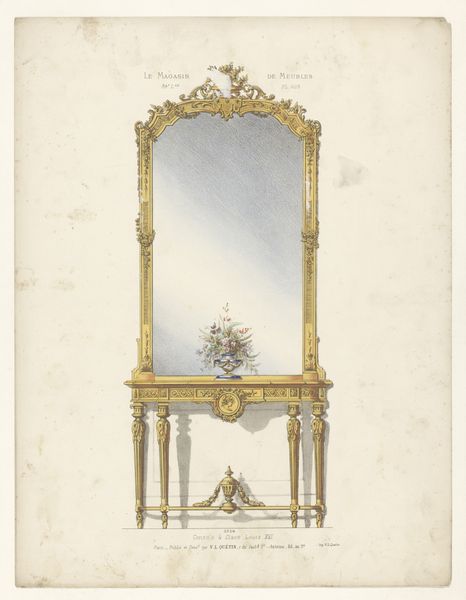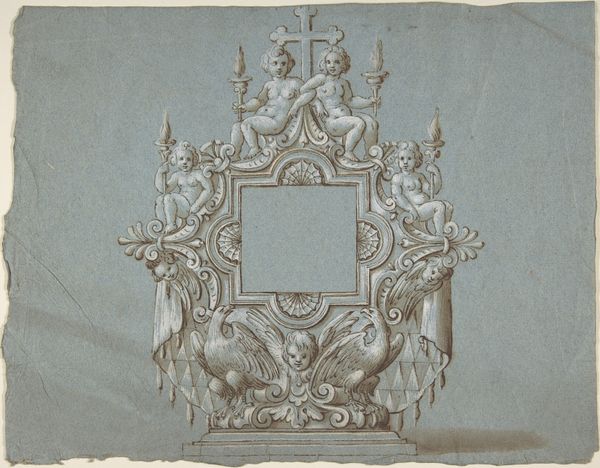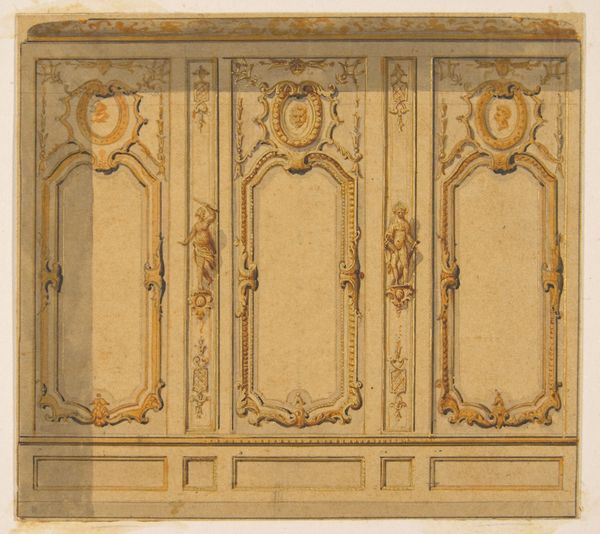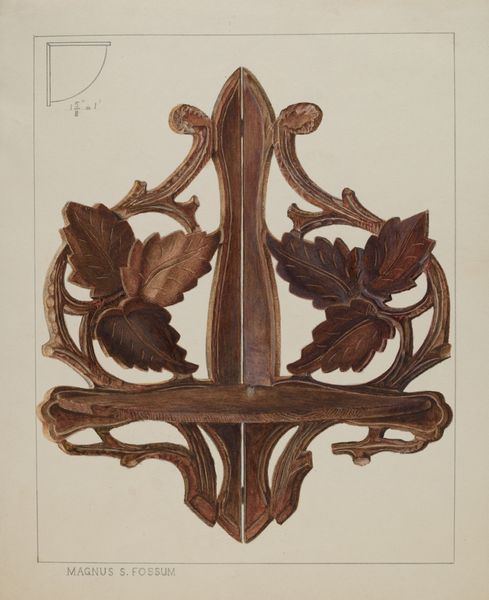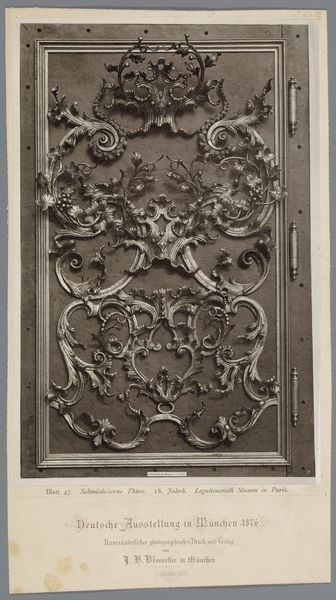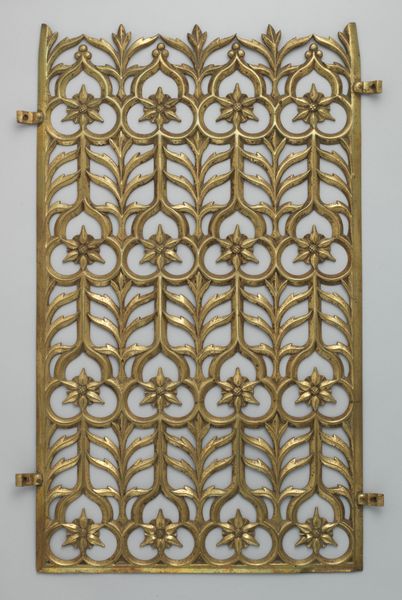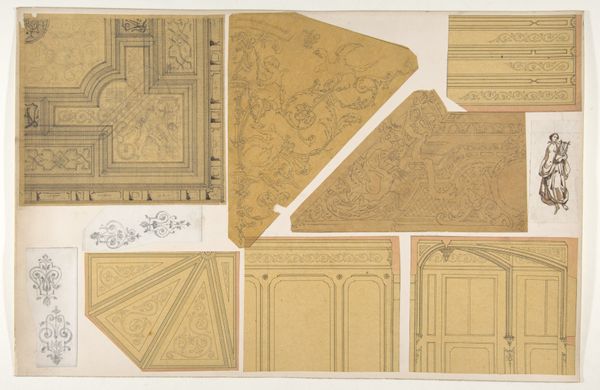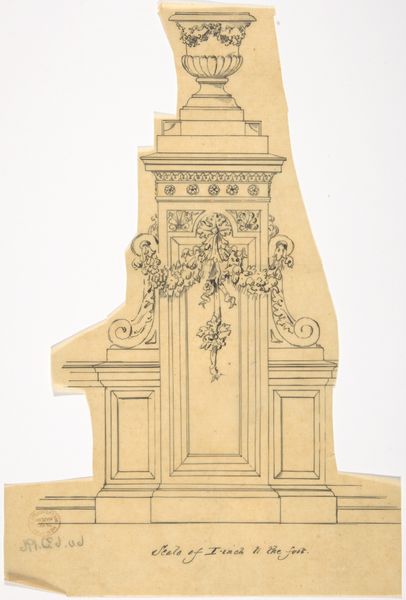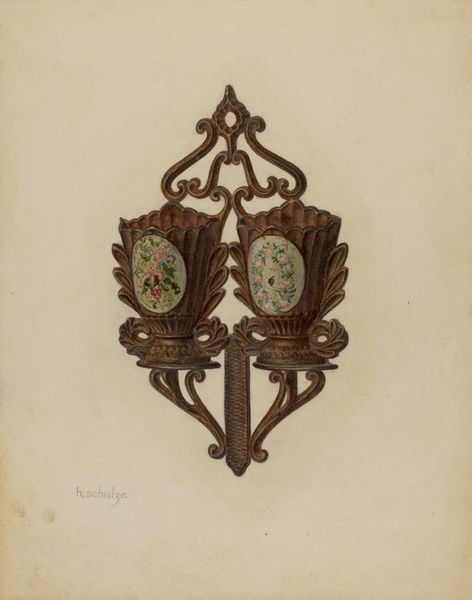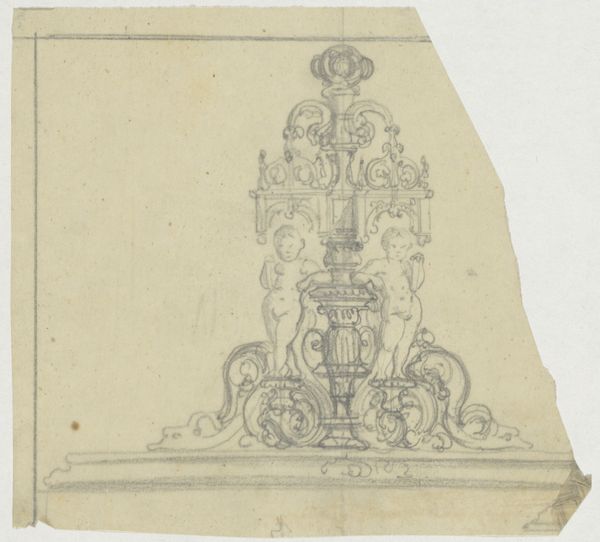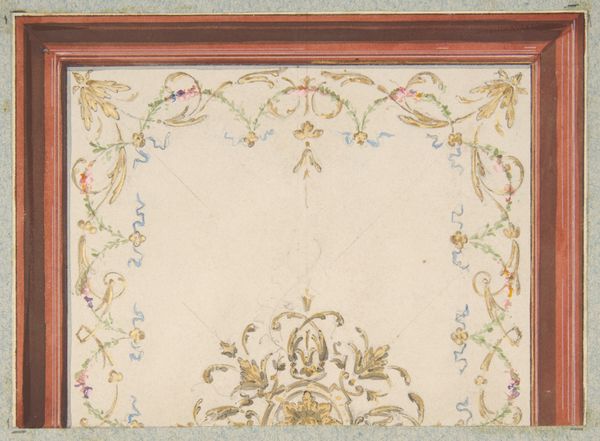
Dimensions: height 350 mm, width 102 mm, depth 67 mm, span 600 mm
Copyright: Rijks Museum: Open Domain
Curator: Here at the Rijksmuseum, we’re standing before "Seven Portraits of Unknown Persons," created sometime between 1875 and 1885 by diverse makers. It's quite striking, isn't it? Editor: It really is. At first glance, the radial composition catches my eye—like a handheld fan meticulously carved from wood. It exudes a formal elegance that's simultaneously intimate because of the photos it presents. Curator: Absolutely. The decorative element, rendered in wood, gives this Romantic-era piece a unique warmth. But think about what displaying these particular images in this way signified for the people represented and also those who commissioned and owned this unusual object. Who are these "unknown persons," and how might we decipher their place in late 19th-century Dutch society? Editor: From a formal point of view, the tonality throughout is incredibly balanced; the neutral hue of the wood brings out the sepia tones in each photograph. It draws attention to the lines, shapes, and how those are distributed rhythmically throughout the wooden frame. What are the meanings held by the individual figures' expressions and clothing styles of this period? Curator: Yes, considering their presentation—is it class, perhaps? It seems clear these were intentional choices designed to convey status and ideals prevalent in the period’s power structures. The careful detail of the crafted wood and the decision to immortalize these figures together invite contemplation on broader societal values and identities. The medium is photography. It gives these portraits such life-like qualities while allowing access only through constructed, curated poses. Editor: The fan’s structure and carefully arranged images also suggest themes of unification and hierarchy. What is their function as a whole? Do the repeated geometric patterns imply larger underlying universalities among individual likenesses? Curator: Indeed. I consider this more than merely a visual representation. For whom was the assemblage created, what socio-economic narratives does it reflect? This fan raises far more questions than it answers. It pushes us to reflect on representation itself during the birth of photography—on visibility and invisibility as social forces. Editor: It prompts a very unique approach in capturing an era when representation, itself, could both freeze moments of life while manipulating what those memories would symbolize over future timelines… Very fascinating!
Comments
No comments
Be the first to comment and join the conversation on the ultimate creative platform.
